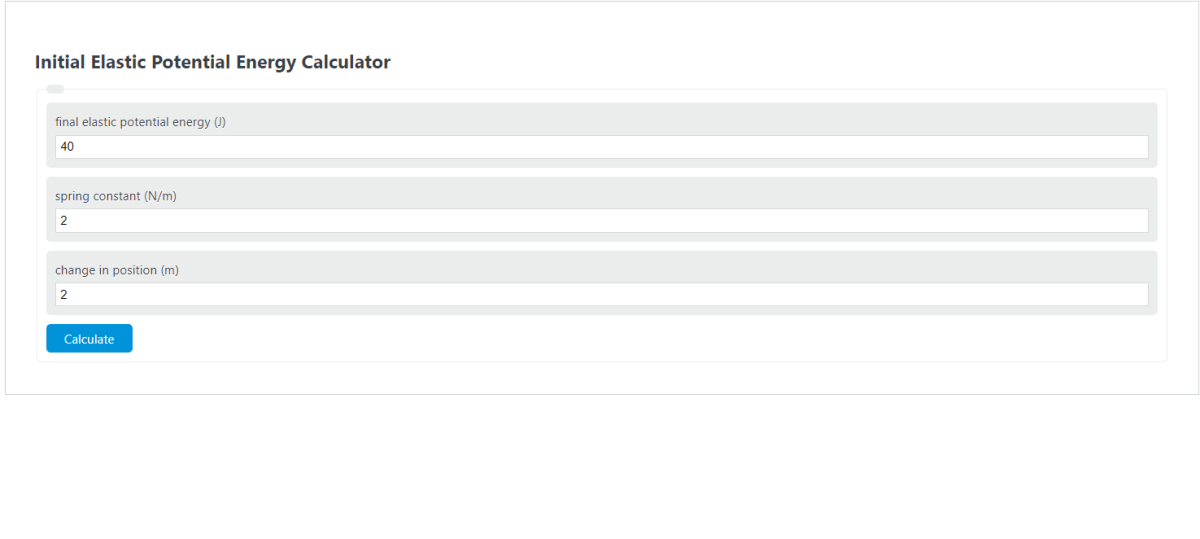Enter the final elastic potential energy (J), the spring constant (N/m), and the change in position (m) into the calculator to determine the Initial Elastic Potential Energy.
- All Energy Calculators
- Elastic Potential Energy Calculator
- Potential Energy to Force Calculator
- Torsion Bar Spring Energy Calculator
Initial Elastic Potential Energy Formula
The following equation is used to calculate the Initial Elastic Potential Energy.
PEi = PEf - f*x
- Where PEi is the Initial Elastic Potential Energy (J)
- PEf is the final elastic potential energy (J)
- f is the spring constant (N/m)
- x is the change in position (m)
To calculate the initial elastic potential energy, multiply the spring constant by the change in position, then subtract the result from the final elastic potential energy.
How to Calculate Initial Elastic Potential Energy?
The following example problems outline the steps and information needed to calculate the Initial Elastic Potential Energy.
Example Problem #1
- First, determine the final elastic potential energy (J). In this example, the final elastic potential energy (J) is determined to be 400 .
- Next, determine the spring constant (N/m). For this problem, the spring constant (N/m) is measured to be 3 .
- Next, determine the change in position (m). In this case, the change in position (m) is found to be 5.
- Finally, calculate the Initial Elastic Potential Energy using the formula above:
PEi = PEf – f*x
Inserting the values from above and solving the equation yields:
PEi = 400- 3*5 = 375 (J)
Example Problem #2
Using the same method as above, first, we need to measure or determine the variables required by the equation. For this example problem, these are provided as follows:
final elastic potential energy (J) = 500
spring constant (N/m) = 4
change in position (m) = 3
Enter these given values into the calculator or above yields:
PEi = 500- 4*3 = 488 (J)
